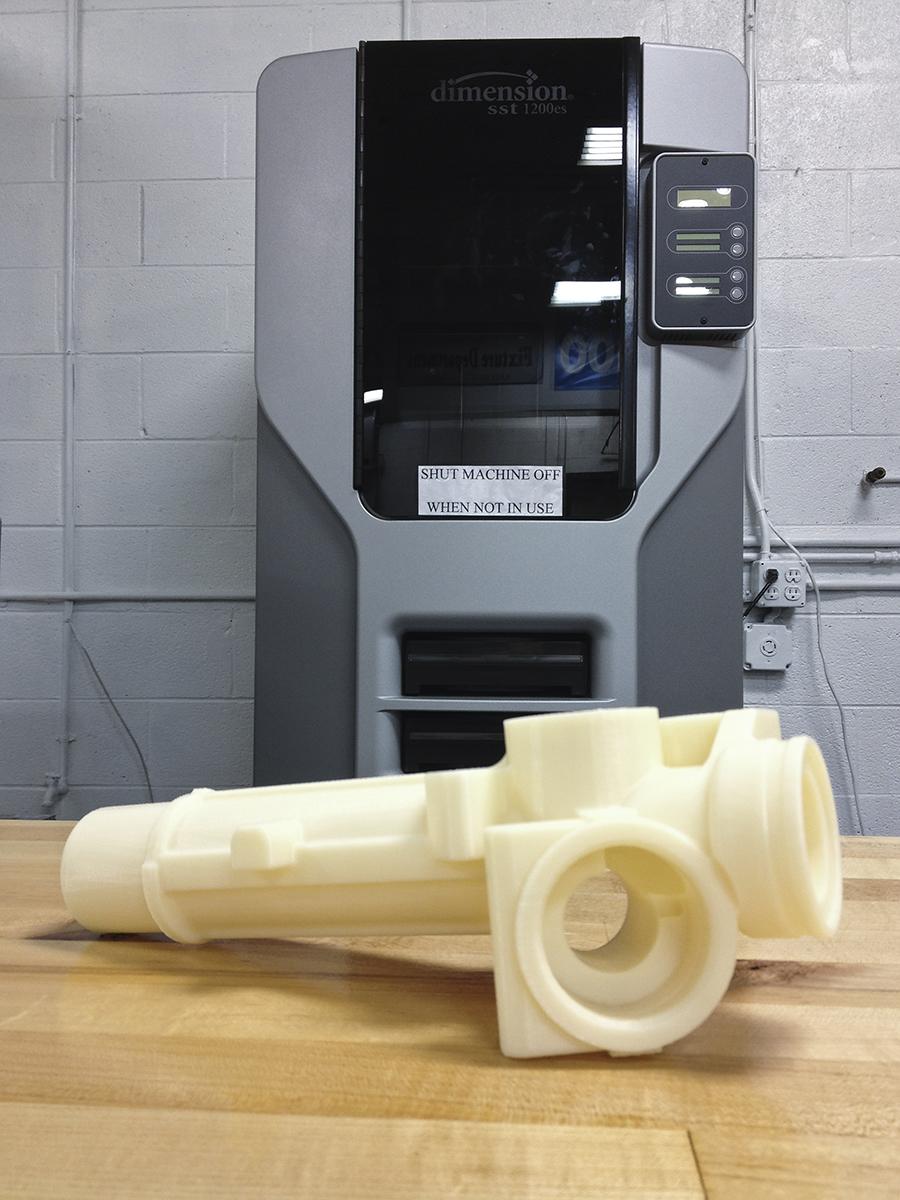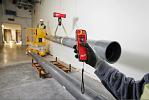- FMA
- The Fabricator
- FABTECH
- Canadian Metalworking
Hybrid Machine, Standard CNC
Today’s controls can handle the challenges of combined additive/subtractive machining
- By Randy Pearson
- April 21, 2016
- Article
- Metalworking

Laser metal deposition for additive manufacturing meets conventional metal cutting subtractive manufacturing on the same machine, run entirely by a single CNC in an inert atmosphere.
With the emergence of additive machining (AM) more than a decade ago, it quickly became a prototyping marvel.
As design changes were made, the result could be quickly visualized in a 3-D solid part. Manufacturers also appreciated the tool because it enabled them to see potential process problems in the actual cutting of the part. Modifications could be made on-the-fly without part functionality being compromised. Last, for the estimators, this tool allowed substantially better quote prepping.
Then it happened. The materials being used for 3-D printing evolved at lightning speed, and the market quickly realized this technology had production potential. Making a short run of parts on such a machine became a reality.
While 3-D printing machines are still five to 10 years away from being everyday shop production units, according to the best industry sources, another development has bee
n the fusion of additive and subtractive technologies into a new generation of hybrid machines. In similar fashion, seemingly incompatible technologies such as laser metal deposition and chip cutting machines have emerged.
Existing, standard CNC technology has been implemented on these machines. Whether the parameters involve laser gases, powdered metal deposition and inert atmosphere vacuum, or 5-axis rotation of a milling head or rotary table, the function of the control remains nearly identical.
In this way, a single control can run two varying technologies for fabrication and chip cutting, either on a single channel or on a two-channel unit, often in tandem with a robot head or gantry for part articulations.
As you might have seen at the last IMTS, when that technology was introduced to the market, running a lathe and a robot on the same CNC was already possible, without the need for a secondary PLC and “unique” robot language commands.
This goes to the next level, as additive and subtractive technologies are joined on the same machine.

Additive manufacturing is poised to take the next step into production mode within the next decade, or sooner, according to industry sources.
And it gets better.
Parts made from titanium, stainless steel, or disparate powdered metals are being built up, joined, machined, or otherwise processed on these machines – today. Driven gears, for example, are now laser welded from machined and stamped components into a single assembly.
The CNC, when controlling these radically different machine operations, utilizes a modified set of code but not a different language, as was necessary previously with robotic integration. Because advanced CNC units carry a secondary channel, the commands can easily be set up there, if not incorporated into the main channel. It all depends on the complexity of the motion and total number of parameters being controlled. The simultaneous control and monitoring of laser metal deposition and 5-axis milling functions actually presents little challenge to high-end CNCs on the market today.
I cannot begin to know where things are headed from here, but the next decade will surely be an exciting and game-changing time in the machine tool and fabrication world. Just remember, the CNC is in control.
Q: Is simulation possible for additive manufacturing (AM), and what can it help accomplish?
A: Yes, simulation of the production is certainly possible, so the manufacturer can accurately determine the cycle times, material quantity requirements, and other things.
Q: Does the CNC change when controlling an AM machine?
A: Not really. Waterjets, lasers, and other non-chip-cutting machinery are now all run by CNC. It’s simply a different set of parameters being monitored.
Q: How does a CNC adapt for hybrid subtractive/additive machines?
A: The motion control is quite similar, really. On a twin-channel CNC, you can, for example, run a robot to load/unload and articulate the parts in production, without the need for a second PLC on the machine. One shop even runs a milling and laser sintering (additive) process on the same machine using a single CNC.
Randy Pearson is international business development manager, Siemens Industry Inc., 800-879-8079, www.siemens.com/cnc.
About the Author
subscribe now


Keep up to date with the latest news, events, and technology for all things metal from our pair of monthly magazines written specifically for Canadian manufacturers!
Start Your Free Subscription- Industry Events
ZEISS Quality Innovation Days 2024
- April 15 - 19, 2024
Tube 2024
- April 15 - 19, 2024
- Düsseldorf, Germany
CTMA Economic Uncertainty: Helping You Navigate Windsor Seminar
- April 30, 2024
- Windsor, ON Canada
MME Winnipeg
- April 30, 2024
- Winnipeg, ON Canada
CTMA Economic Uncertainty: Helping You Navigate Kitchener Seminar
- May 2, 2024
- Kitchener, ON Canada




















